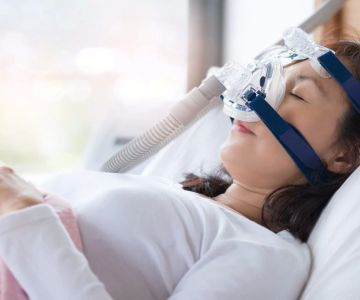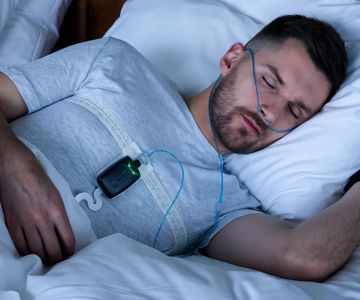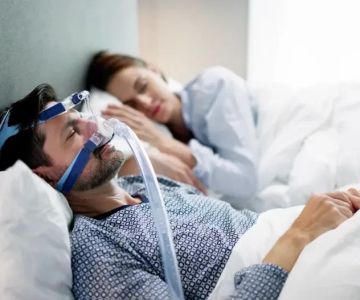Introduction to Sleep Apnea and CPAP Treatment
Sleep apnea is a significant health issue affecting millions of Americans, with obstructive sleep apnea (OSA) being the most common form. Characterized by interruptions in breathing during sleep, it can lead to daytime fatigue and other health issues if left untreated. CPAP, or Continuous Positive Airway Pressure, is often prescribed as a standard treatment, particularly for severe cases. But is it truly the best option available for everyone? In this article, we explore CPAP's efficacy and potential alternatives, allowing users to make informed decisions about their sleep health. Welcome to Dentistry Toothtruth, your guide to understanding oral health treatments in the United States.
Understanding CPAP and Its Mechanism
CPAP therapy involves using a machine that delivers air pressure through a mask, keeping airways open during sleep. The consistent air pressure prevents airway collapse, ensuring uninterrupted breathing. Studies indicate that when used correctly, CPAP significantly reduces the symptoms of sleep apnea, improves sleep quality, and decreases associated health risks. However, adherence can be challenging due to discomfort, noise, and inconvenience, which leads some to question if it's the best treatment for everyone.
Evaluating the Effectiveness of CPAP
While CPAP is often hailed as the gold standard for severe sleep apnea treatment, its real-world effectiveness depends largely on patient adherence. The American Sleep Apnea Association reports that roughly 50% of users abandon CPAP therapy within the first year, often due to issues with fit or side effects like nasal congestion. Despite these challenges, CPAP remains highly effective for those who use it regularly, reducing apneas significantly and enhancing overall sleep quality.
Exploring Alternatives to CPAP
For those unable to tolerate CPAP, there are several alternative treatments available. Dental appliances, for instance, are gaining popularity. At Dentistry Toothtruth, we emphasize customized oral devices that adjust jaw positioning to keep airways open. Other options include positional therapy, weight management, and surgical interventions. Each alternative bears its own set of pros and cons, tailored to different severities and causes of sleep apnea.
The Role of Lifestyle Changes in Sleep Apnea Management
Addressing lifestyle factors can be crucial in managing sleep apnea. Weight loss, for example, has been shown to reduce the severity of symptoms in many individuals. Additionally, avoiding alcohol and smoking, alongside regular physical activity, can help improve airway stability. Creating a sleep-conducive environment, such as minimizing noise and light disturbances, further supports better sleep hygiene, complementing any medical treatment undertaken.
Evaluating Patient Suitability for CPAP
Determining whether CPAP is the best treatment for a patient involves assessing the severity of the condition, the patient’s anatomy, and their willingness to comply with treatment. It is also critical to consider their experience with initial CPAP trials. For some, an alternative approach might yield better results, suggesting a need for personalized treatment plans. Engaging with sleep specialists who are knowledgeable about the latest innovations in sleep apnea management from practices like Dentistry Toothtruth can be invaluable in this regard.
Conclusion: Making Informed Treatment Decisions
Ultimately, "Is CPAP the best treatment for severe sleep apnea?" depends largely on individual circumstances. While CPAP remains the most widely recommended approach due to its clinical efficacy, patient comfort and compliance are paramount. Exploring alternatives and incorporating lifestyle modifications can significantly enhance outcomes for many. At Dentistry Toothtruth, we believe in a holistic approach, ensuring each patient receives the most appropriate care tailored to their needs. If you or a loved one is dealing with sleep apnea, consider discussing these options with a healthcare provider to discover the most suitable path to better sleep and health.







 Westgate Dental Arts
Westgate Dental Arts Coventry Family Dental
Coventry Family Dental Familia Dental
Familia Dental Dr. Daniel S. Fife, DDS
Dr. Daniel S. Fife, DDS Dentistry At Suburban Square: Michael I. Wollock, DMD
Dentistry At Suburban Square: Michael I. Wollock, DMD Comfort Care Dental
Comfort Care Dental The Importance of Oral Health Education During Pregnancy for a Healthy Pregnancy
The Importance of Oral Health Education During Pregnancy for a Healthy Pregnancy Best Tips for Brushing Your Teeth Properly for Healthy Gums: Essential Techniques for Oral Health
Best Tips for Brushing Your Teeth Properly for Healthy Gums: Essential Techniques for Oral Health Why Skipping Dental Checkups Can Lead to Bigger Oral Health Problems
Why Skipping Dental Checkups Can Lead to Bigger Oral Health Problems Advantages of Porcelain Dental Restorations
Advantages of Porcelain Dental Restorations How Can Diabetes Cause Tooth and Gum Problems? Preventing and Managing Oral Health Issues
How Can Diabetes Cause Tooth and Gum Problems? Preventing and Managing Oral Health Issues Healthy Habits for Promoting Good Oral Health and Hygiene: Tips for a Healthy Smile
Healthy Habits for Promoting Good Oral Health and Hygiene: Tips for a Healthy Smile